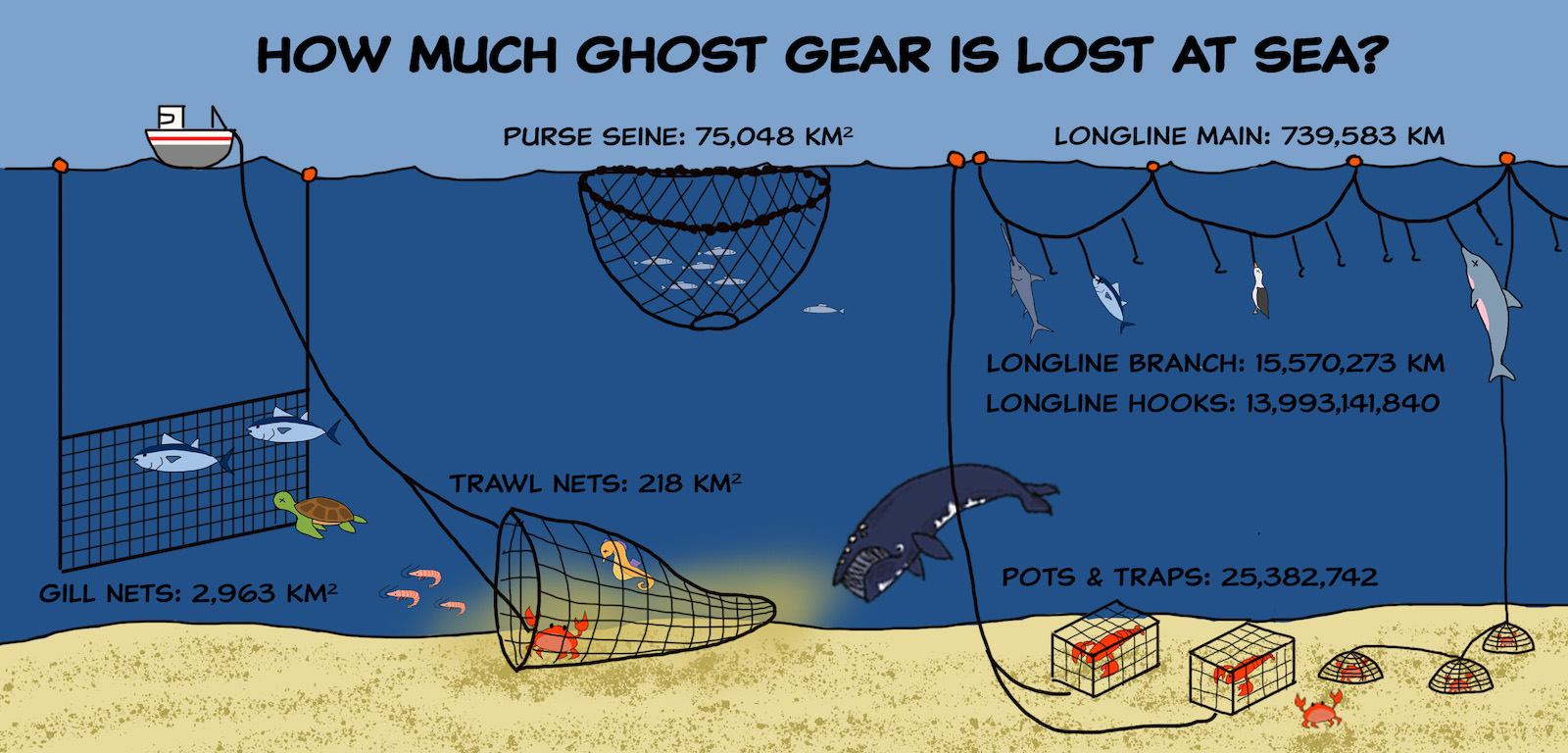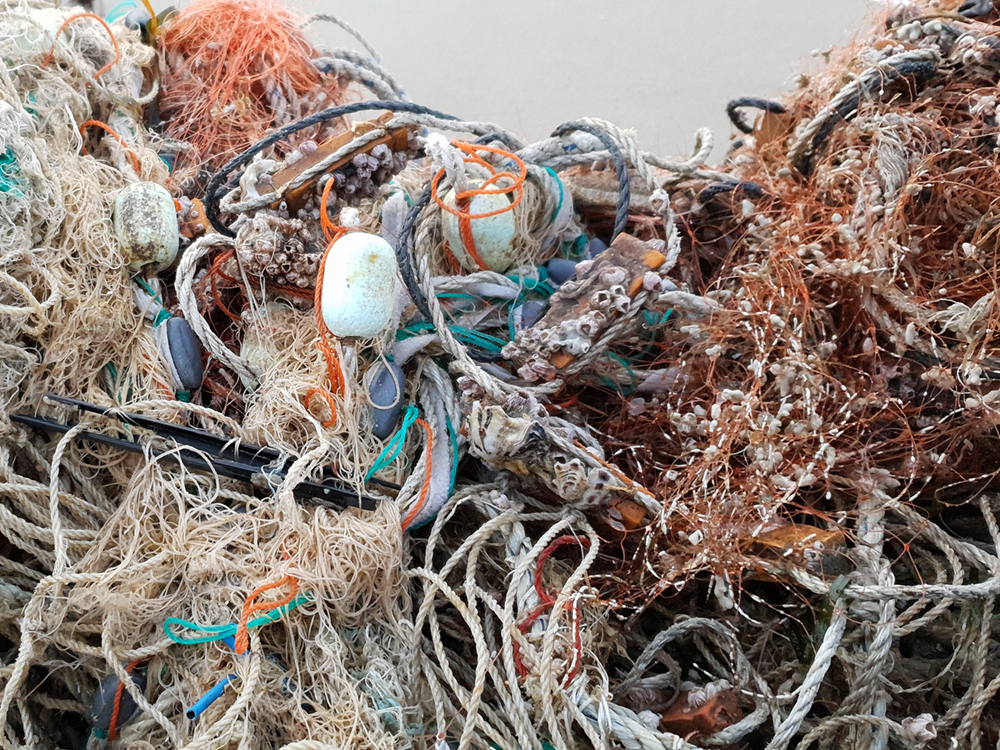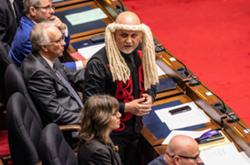Plastic haunts the ocean. Every year, a gargantuan heap of fishing equipment — mainly made from plastic — is lost, abandoned or discarded at sea. That neglected fishing paraphernalia, known as ghost gear, can persist in the environment for hundreds of years, killing all kinds of marine life. While scientists have long been aware of the threat ghost gear poses, updated research gives detailed estimates on the shocking amount of derelict gear lost at sea.
In academic literature and institutional reports, researchers have repeatedly noted that 640,000 tonnes of fishing gear is lost annually — roughly twice the weight of the Empire State Building.
Scientists now believe this number is unsubstantiated.
To clarify the facts, researchers from the University of Tasmania in Australia surveyed fishers from seven countries about their use of five different gear types: gillnets, purse seines, trawl nets, longlines, and pots and traps. From the surveys, the scientists calculated annual gear loss rates for each fishing method and extrapolated that to fishing efforts around the world. The researchers estimate that fishing vessels lose around two per cent of their gear every year, a staggering amount when taken together.

Of the gear types considered in the surveys, purse seines racked up the highest numbers with over 75,000 square kilometres of nets lost each year — an area more than three times the size of Vermont. Purse seines are deployed around entire schools of fish, and the nets are known to trap turtles and marine mammals as bycatch. Once untethered and lost, these nets can ball up and entangle other plastic debris.
Equally alarming is the estimated quantity of lost longlines. This fishing gear is composed of a horizontal main line (which can stretch up to 45 kilometres for a single vessel) and vertical branch lines tipped with baited hooks.
While an individual vessel may lose only five kilometres of main line a year, the prevalence of this fishing method means that fishers around the globe lose 739,583 kilometres annually — almost the distance to the moon and back.
The amount of lost branch lines is even larger: tied end to end, they would cover a distance 20 times greater than the lost main lines. The metal hooks attached to the branch lines are also highly problematic — an estimated 13.9 billion are lost every year.
The study provides eye-opening information about how much ghost gear afflicts the ocean. The data can provide further impetus for organizations — the Global Ghost Gear Initiative, for example — and fishers to invest more in preventing gear loss or cleaning up lost equipment. With great data comes great responsibility. ![]()
Read more: Environment
















Tyee Commenting Guidelines
Comments that violate guidelines risk being deleted, and violations may result in a temporary or permanent user ban. Maintain the spirit of good conversation to stay in the discussion and be patient with moderators. Comments are reviewed regularly but not in real time.
Do:
Do not: